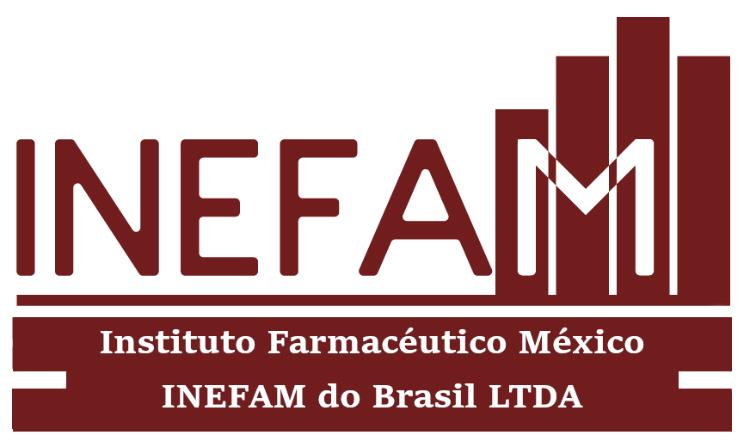INEFAM:LATAM ® Case Study.
A Major Brazilian Pharmaceutical Company Wants to Evaluate its Market Potential in México Public Sector.
The Challenge: To Determine Which Molecules are Worth Entering Mexico Market.
1) The Client’s Background as a Pharmaceutical Manufacturer with a Slight Presence in México
This huge pharmaceutical company with over 8,000 employees and 12 manufacturing sites worldwide, owns a top3 leading role in generics in the whole LATAM region. They do not just focus on pharmaceuticals only, they also have some other profitable lines of business, but their interest in contacting INEFAM to evaluate the potential of their possible market if they decide to formally enter this market.
They asked us to evaluate, out of a selected SKU catalogue of 650 generic molecules, which ones are worth entering the Mexican market formally.
2) Explaining in Context the Mexican Public Sector:
During the kick-off meeting, we explained the Brazilian board how the Mexican health sector is compounded:
- Over 300 public institutions.
- Over 4,000 medical units.
- Over 125 million beneficiaries.
- Almost 5,000 public tenders are published every year to request needs of pharmaceuticalproducts.
- Total Mexican public market value: 4.5 billion USD per year.
- Over 2,000 providers, distributors and manufacturers are assigned supply contracts everyyear.
- COFEPRIS regulation procedures and timings ore not the best these recent years since itscreation.
Given these market conditions, taking baby steps is outmost important though. The right molecule can quicky earn a strong market share within the first 3 to 6 months.
3) Our Research Procedure:
We defined the following research objectives for this project:
- To point how many sanitary registrations are current per each molecule.
- We made a link between the 650 molecules and the national formulary codes (CNIS/CByCM).
- From these sanitary registrations, how many of them are active in the Mexican public sector (not all players are really selling to government institutions).
- Once we detect those that are actually selling to public sector, establish a comprehensive diagram to establish for which of them, the given molecule is on its top10 portfolio. We use INEFAM public market audit tool to set these relations (purchase data from 2010 to 2022).
- With that done clear, then we develop a market evolution with all the molecules that are being sold to government, in order to establish a Pareto rule (to identify the 20% of the molecules that represent the 80% of the market).
- Then we targeted these 130 molecules (the 20% more valuable in the original portfolio):
- Which are the main public institutions that buy those molecules.
- Which are the main distributors per public institution.
- Which are main manufacturers per distributor per public institution.
- Then, per each one of the molecules we addressed the following questions:
- How much is worth the annual market value per institution.
- An average price market evolution helped identifying those public institutions that are keeping the molecule price stable.
- Per public institution:
- Which are the manufacturers who sell directly.
- Which public institutions are buying to distributors.
- With this information at hand, we developed a graphic design to clearly identify four different ‘heath zones’ of each molecule:
- Heath zone 1. Do not enter. This is the no-enter zone, meaning that the price is getting lower every year and the molecule faces extreme competition.
- Heath zone 2. Exhaust zone. This zone gathers the molecules that are gaining market volume every year, but the competition is heavy.
- Heath zone 3. Death zone. In this heath zone, the competition is low and the market values are getting down every year.
- Heath zone 4. Definitive entry. In this heat zone, there are few sanitary registrations, few manufacturers selling to government, and the price is steady or rising.
4) Our Approach to the Analysis:
- We used INEFAM-FALLOS® (contracts assigned) to evaluate the tenders and biddings, using data from 2015 to 2022.
- Also, with INEFAM-SP® (real purchase level), we established the level of purchase per each molecule.
- Some data needed to be complemented using other 10 different Mexican public audit tools.
- COFEPRIS public database was used to determine the sanitary registrations countdown.
The Deliverables:
This project needed to be delivered to our client with all the XLS files used from the INEFAM market audit tools, as well as 5 different comprehensive PPT files, each one with over 50 slides.
The Results and Impact:
While presenting the 5 PPT files, some other questions arose, like patents due date, so we quickly added that information to the analysis.
From the 130 molecules selected by the Pareto model, the client in Brazil chose to focus in only the most protected 50.
The sales of some particular distributors called particular attention. Hence, the client asked us additional competitive intelligence information regarding their whole market values and manufacturer business relations.
5) Time to Develop the Deliverables:
All the documents were delivered to the client just 8 weekdays after the kick-off meeting.
Of course, the use of artificial intelligence (machine learning and natural language processing) that are running over the INEFAM market audit tools helped getting the best insights when performing the market dynamics.
